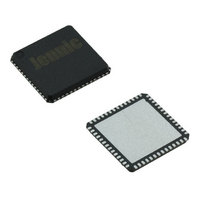JN5148-001-X NXP Semiconductors, JN5148-001-X Datasheet - Page 36

JN5148-001-X
Manufacturer Part Number
JN5148-001-X
Description
IC MCU 802.15.4 32BIT 2.4G 56QFN
Manufacturer
NXP Semiconductors
Series
JN5148r
Datasheet
1.JN5148-UG010.pdf
(99 pages)
Specifications of JN5148-001-X
Frequency
2.4GHz
Data Rate - Maximum
667kbps
Modulation Or Protocol
802.15.4
Applications
Home/Building Automation, Industrial Control
Power - Output
2.5dBm
Sensitivity
-95dBm
Voltage - Supply
2 V ~ 3.6 V
Current - Receiving
17.5mA
Current - Transmitting
15mA
Data Interface
PCB, Surface Mount
Memory Size
128kB RAM, 128kB ROM
Antenna Connector
PCB, Surface Mount
Operating Temperature
-40°C ~ 85°C
Package / Case
56-QFN
Lead Free Status / RoHS Status
Lead free / RoHS Compliant
Other names
616-1049-2
935293999531
JN5148-001-X
935293999531
JN5148-001-X
The data transfer rate on the SPI bus is determined by the SPICLK signal. The JN5148 supports transfers at
selectable data rates from 16MHz to 125kHz selected by a clock divider. Both SPICLK clock phase and polarity are
configurable. The clock phase determines which edge of SPICLK is used by the JN5148 to present new data on the
SPIMOSI line; the opposite edge will be used to read data from the SPIMISO line. The interface should be configured
appropriately for the SPI slave being accessed.
If more than one SPISEL line is to be used in a system they must be used in numerical order starting from SPISEL0.
For instance if 3 SPI select lines are to be used, they must be SPISEL0, 1 and 2. A SPISEL line can be automatically
deasserted between transactions if required, or it may stay asserted over a number of transactions. For devices such
as memories where a large amount of data can be received by the master by continually providing SPICLK
transitions, the ability for the select line to stay asserted is an advantage since it keeps the slave enabled over the
whole of the transfer.
A transaction commences with the SPI bus being set to the correct configuration, and then the slave device is
selected. Upon commencement of transmission (1 to 32 bits) data is placed in the FIFO data buffer and clocked out,
at the same time generating the corresponding SPICLK transitions. Since the transfer is full-duplex, the same
number of data bits is being received from the slave as it transmits. The data that is received during this transmission
can be read (1 to 32 bits). If the master simply needs to provide a number of SPICLK transitions to allow data to be
36
Polarity
(CPOL)
0
0
1
1
SPICLK
EEPROM
Memory
(CPHA)
Flash/
Phase
Slave 0
0
1
0
1
Mode
0
1
2
3
Figure 24: Typical JN5148 SPI Peripheral Connection
SPISEL 0
Defined
User
Slave 1
Description
SPICLK is low when idle – the first edge is positive.
Valid data is output on SPIMOSI before the first clock and changes every
negative edge. SPIMISO is sampled every positive edge.
SPICLK is low when idle – the first edge is positive.
Valid data is output on SPIMOSI every positive edge. SPIMISO is sampled every
negative edge.
SPICLK is high when idle – the first edge is negative.
Valid data is output on SPIMOSI before the first clock edge and is changed
every positive edge. SPIMISO is sampled every negative edge.
SPICLK is high when idle – the first edge is negative.
Valid data is output on SPIMOSI every negative edge. SPIMISO is sampled
every positive edge.
JN5148
SPISEL 1
Table 3 SPI Configurations
SPISEL 2
JN-DS-JN5148-001 1v6
SPISEL 3
Defined
SPISEL 4
User
Slave 2
36
33
34
SPIMOSI
SPICLK
SPIMISO
Defined
User
Slave 3
© NXP Laboratories UK 2010
Defined
User
Slave 4


















